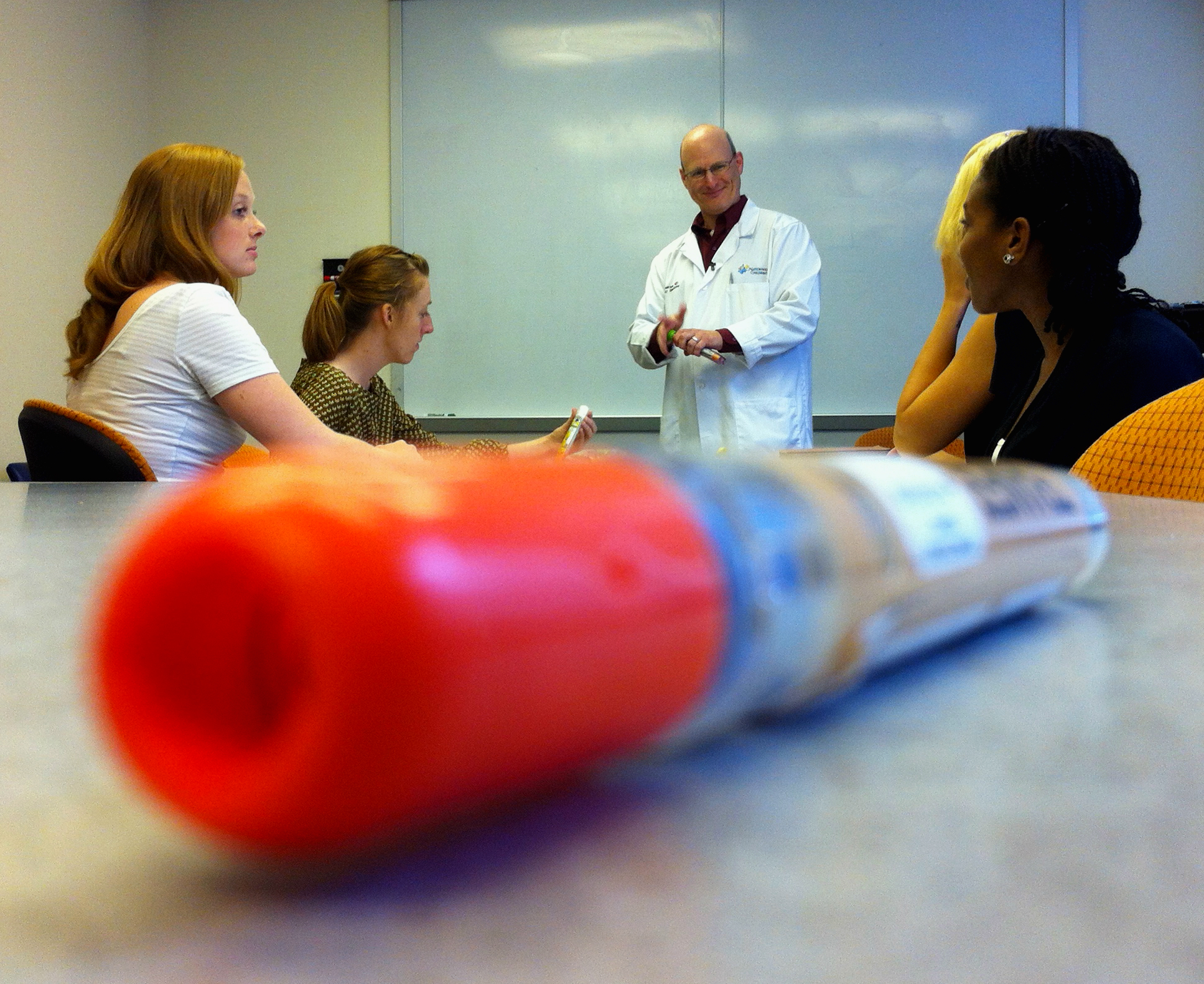
When Dr. Sarah Denny's son Liam was a toddler, she gave him soy milk.
Liam had been diagnosed with certain food allergies, but had drunk soy milk about 200 times with no problems, Denny said.
But on this particular morning, he started coughing and vomiting, and within a minute, he was unconscious.
Luckily, Denny, a pediatrician who works in the emergency room of Nationwide Children's Hospital in Columbus, Ohio, had an injectable form of the drug epinephrine. Denny's husband administered the drug and they rushed Liam to the emergency room, by which time her son had recovered fully.
"If we had not had the auto-injector at home, I do not think he would have survived," Denny told LiveScience.
Now, a new law will make it easier for children like Liam to receive life-saving injections of epinephrine (also called adrenaline) at school, even if they don't have a prescription for the drug.
The law, which President Barack Obama signed today (Nov. 13), provides financial incentives for states to pass laws allowing schools to stock epinephrine and treat children who do not have a prescription for the drug. States with such laws on the books will now be eligible for grants to stock their schools with EpiPens or other forms of injectable epinephrine, Denny said.
Sign up for the Live Science daily newsletter now
Get the world’s most fascinating discoveries delivered straight to your inbox.
The children most likely to benefit from the law are those who aren't known to have an allergy who suddenly go into anaphylaxis, a potentially deadly immune reaction to food, insect bites or other allergens. Anaphylaxis causes the airways to narrow, blood pressure to plummet and can lead to rapid unconsciousness and death.
The only proven treatment for anaphylaxis is an injection of epinephrine. But administering it quickly is essential, because the deadly reaction creates a chemical cascade in the body that becomes harder to shut down the longer it goes untreated, Denny said.
"The scary thing about anaphylaxis is it's really unpredictable. We have no idea when kids are going to react to a food allergy," Denny said.
Nationally, the incidence of food allergies is on the rise, with incidence of peanut allergy more than tripling between 1997 and 2008, according to a 2010 study in the Journal of Allergy and Clinical Immunology. The latest research suggests 1 in 13 children have a food allergy, Denny said.
Yet many schools still don't stock epinephrine. Currently, only 27 states have laws on the books that allow schools to administer the drug to children without a prescription, Denny said.
Even with more schools stocking epinephrine injections, children who know they have allergies should still carry the medicine with them, Denny said.
Follow Tia Ghose on Twitter and Google+. Follow LiveScience @livescience, Facebook & Google+. Original article on LiveScience.

Tia is the managing editor and was previously a senior writer for Live Science. Her work has appeared in Scientific American, Wired.com and other outlets. She holds a master's degree in bioengineering from the University of Washington, a graduate certificate in science writing from UC Santa Cruz and a bachelor's degree in mechanical engineering from the University of Texas at Austin. Tia was part of a team at the Milwaukee Journal Sentinel that published the Empty Cradles series on preterm births, which won multiple awards, including the 2012 Casey Medal for Meritorious Journalism.









